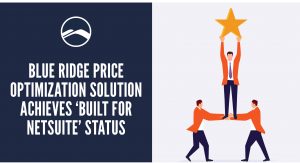Multi-Channel Pricing Strategies MUST Get Smarter
 Ecommerce revenue is up. No one can argue that. But net loss for multi-channel retailers and distributors continues to widen year-over-year. It’s because operating costs continue to be a large percentage of the online transaction, and companies' pricing strategies lack the science to fix this.
Ecommerce revenue is up. No one can argue that. But net loss for multi-channel retailers and distributors continues to widen year-over-year. It’s because operating costs continue to be a large percentage of the online transaction, and companies' pricing strategies lack the science to fix this.
Dynamic Pricing to Blame
Aside from shipping costs and returns, Forbes blames brutal price transparency and dynamic pricing for slipping margins:
“Historically, in-store shoppers rarely knew what other retailers were charging for the same goods, but online consumers are one click from perfect competitive pricing information. This shift toward transparency has caused many to adopt dynamic pricing, rapidly dropping prices in response to a competitive threat. The result is a ‘race to the bottom’ pricing strategy.”
A great deal of today’s companies competing in multi-channel retail or distribution are aware that they need to improve profits, but they don’t know which items, at which locations or on what channels, can get them there. Many have under-priced or over-priced items eroding their profits without their knowledge.
Still, Amazon is plugging along just fine. Of course they are. ? Through massive economies of scale, they can easily bury multi-channel companies which have little to no visibility into customer willingness to pay or competitors’ prices – on top of rising transportation and shipping costs, tariffs and a 20% unemployment rate.
If You Can’t Outscale ‘Em, Outsmart ‘Em
So is the answer to stop selling online? No way. Not at a time when sales have rapidly shifted to online, a trend that’s apparently here to stay. [If you don’t believe that, here are some stats on ecommerce growth right now].
The answer is to outsmart Amazon and other online competitors with AI-enabled Price Optimization technology.
Price Optimization Software
Survivalist distributors and retailers are using intelligent Price Optimization software solutions to quickly identify under-priced items, position list prices against competitors, test list pricing strategies, and compare forecasted outcomes to achieve margin, profit, revenue, market share and other financial goals.
Better list pricing can be used to do things like improve negotiated net prices, leverage supplier negotiations, comply with vendor minimums like NPIP and MAP, and improve price image.
Price Optimization solutions drive speed and agility on a highly price-transparent battlefield because of their calculating power. Users can proactively test the potential outcome of various price changes across the entire assortment, not just top-tier items. And make adjustments on the fly with just a few clicks.
Great News
If this sounds interesting to you, then the timing is perfect. Today we announced that our new Price Optimization solution has earned Built For NetSuite Certification status, a program that verifies Blue Ridge Price Optimization meets the Oracle NetSuite SuiteCloud Platform development standards and best practices.
Read more here or visit our Price Optimization page to learn more about this solution.
Blue Ridge Price Optimization Solution Achieves ‘Built for NetSuite’ Status:



Comments are closed.